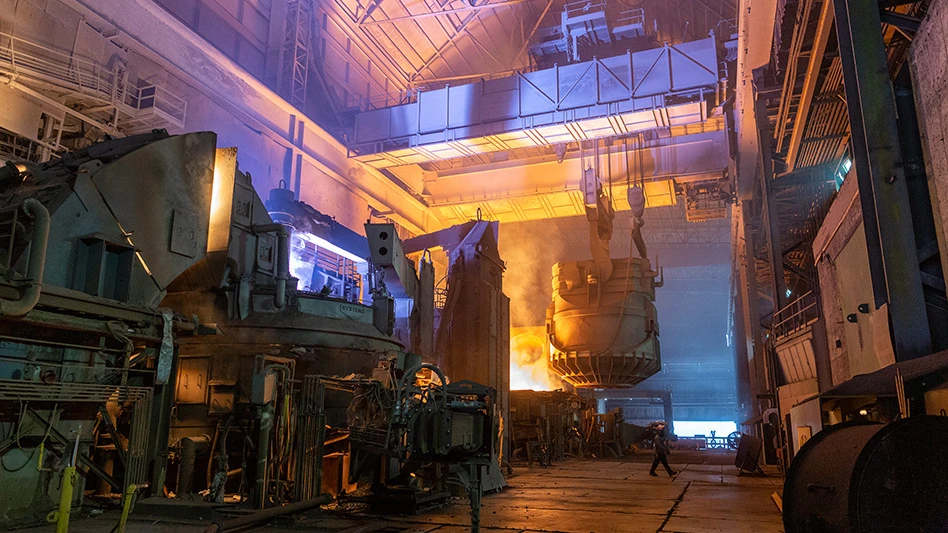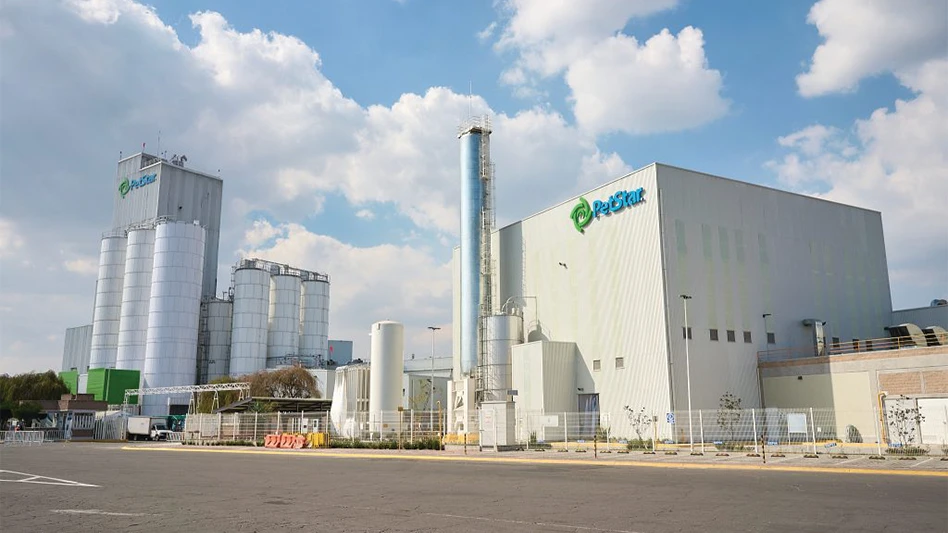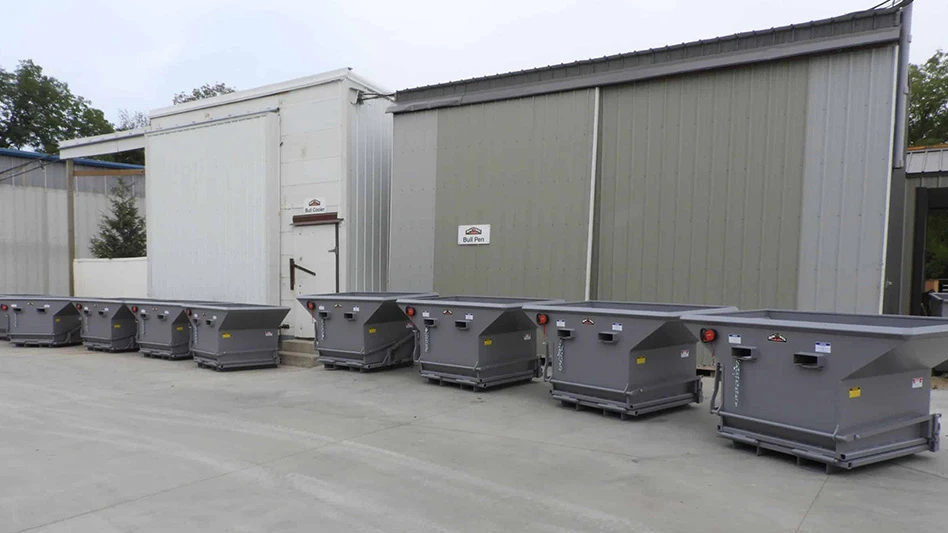Steelmakers may have received some press recently with the announcement of a number of high-profile mergers; but, the nonferrous metals industry, which has benefited from strong markets throughout the past several years, is now a key sector for acquisition activity. Plans by mining firms and nonferrous metals companies to grow the size of their companies, as well as to expand the metals they handle, are resulting in proposed deals that could rank as some of the largest deals of all time.
These proposed mergers and acquisitions are taking place in a market that some are calling a metals super cycle. The prolonged bull market that many nonferrous metals have been experiencing doesn’t show signs of a significant correction. Prices for some nonferrous metals, which have come off their historic highs recently, are showing signs of a swing toward the upside.
Even with the sharp slowdown in the U.S. economy, most nonferrous metals markets have held up, thanks to strong buying from outside of North America. Additionally, most of the principal players involved in this recent merger trend are headquartered outside of North America in nations such as Australia, Switzerland, Russia, China and Brazil.
A BOLD MOVEA proposed merger presently being played out is a move by the world’s largest mining firm, BHP Billiton, based in Australia, to acquire Rio Tinto, one of the three largest mining and metals commodity producers in the world. The offer, for approximately $147 billion, and its recent rejection, sent reverberations through the mining and metals markets. The move is only the latest in a series of salvoes that have been launched in the nonferrous segment of the metals industry.
More astounding than the proposal was the dollar figure offered for the acquisition. At $147 billion, the price far exceeded the blockbuster deal between Mittal Steel and Arcelor several years ago.
Throughout the past several years, a number of high-profile mergers and acquisitions have taken place. These deals have altered the dynamics at play in the nonferrous industry, leaving fewer companies in the market.
While fewer companies remain, the global nature of the industry ensures that a number of large companies still are vying for position in various regional markets. These companies include large mining concerns with significant exposure to the commodity side of the metals industry, such as BHP Billiton and Rio Tinto; large aluminum producers, such as U.S.-based Alcoa, United Rusal, headquartered in Russia, and China Aluminum Corp. (Chinalco), partly owned by the Chinese government; and firms that supply a number of ferrous and nonferrous metals, such as Xstrata and Vale.
Copper, which has enjoyed especially strong markets throughout the last several years compared to other metal commodities, saw global consumption increase by 7.2 percent during the first 10 months of last year, despite a decline in U.S. consumption. In fact, U.S. copper consumption, which stood at approximately 22 percent of total consumption in 2000, has declined to less than 12.5 percent today. Meanwhile, China, which consumed less than 13 percent of all the copper produced in 2000, now consumes 22.7 percent of the copper produced, according to the International Copper Study Group.
BENEFITING FROM THE SUPER CYCLEThroughout the past five years, markets for most metals have seen a stunning resurgence. Prices have skyrocketed, creating greater interest among businesses in strengthening their global presence, adding additional capacity and expanding the metals they produce or handle.
With the potential of a U.S. recession growing more prominent, some metals industry observers say they expect to see a reduction in much of the froth in metals prices. However, even with a slowing U.S. market, the overall strength of many metals should hold up fairly well, as markets outside of North America have developed sufficiently to lessen the impact of a potential U.S. recession.
China should continue in its role as the leading metals consumer, taking in most of the metals produced today. According to one report, China accounts for 75 percent to 100 percent of the growth in some nonferrous metals.
An analyst from one metals monitoring firm says that while these recent deals among nonferrous metals producers are captivating Wall Street, mergers have been taking place in the nonferrous industry for quite some time. However, the size of the deals is growing significantly.
BHP’s plan to acquire Rio Tinto pits the largest mining concern against the second largest. At press time, Rio Tinto has rejected BHP’s offer. However, as industry parlance goes, Rio Tinto now is "in play," meaning it is the possible target of offers from other companies.
Meanwhile, a number of other large nonferrous metals companies are taking steps to strengthen their positions. The battle to control the metals industry is creating a scramble, with several companies purchasing stakes in other companies to ensure they can obtain the raw material they need for their operations.
For some of these companies, opportunities throughout the past several years have expanded the types of materials they handle. Xstrata, which several years ago was a mid-size processor of nickel, has grown to become one of the top producers of more than a half-dozen commodities, including copper, nickel, zinc and assorted alloys.
TIES THAT BINDWhat is becoming more apparent is that the various entities are becoming increasingly interconnected in their operations. Even as BHP attempts a takeover of Rio Tinto, Alcoa and China Aluminum Corp. (Chinalco) have quietly taken a stake in Rio Tinto.
In early February, Chinalco and Alcoa combined to purchase more than a 10 percent stake in Rio Tinto. Both companies have particular reasons for this move.
For Alcoa, a pure aluminum player, a possible motive could be to acquire some of Rio Tinto’s Alcan assets, which it sought to acquire last year, but was ultimately outbid by Rio Tinto.
Additionally, the move by Alcoa and Chinalco could work to either block the merger deal on offer by BHP or to allow the companies to acquire assets that could need to be sold off as a result of a BHP-Rio Tinto merger in order to meet antitrust obligations.
It is estimated that BHP and Rio Tinto, along with Brazil-based Vale, currently control more than 70 percent of the open market iron ore business. With Chinese mills being one the biggest consumers of iron ore products, a move by Chinalco to access a significant amount of Rio Tinto’s stock could be used as leverage to acquire iron ore deposits that a combined BHP and Rio Tinto might have to sell off. As a result, Chinalco would be able to obtain iron ore to feed its steel mills at a more favorable price. (According to some reports, iron ore prices could climb by 70 percent this year.)
Creating another obstacle for the potential BHP acquisition of Rio Tinto is a request from the International Iron and Steel Institute (IISI) for competition authorities to review the proposed BHP Billiton/Rio Tinto deal.
In a statement, Ian Christmas, the IISI’s secretary general, states, "We are again calling on competition authorities to seriously examine the obvious implications for future pricing regimes and the competitive environment for iron ore." In support of its request, the IISI notes that a combined BHP Billiton-Rio Tinto firm would result in almost 80 percent of the world seaborne iron ore exports to be controlled by the three firms.
Some analysts speculate that Alcoa, which had earlier sought to acquire Alcan, but was ultimately outbid by Rio Tinto, might look to make a play for some of Alcan’s hydro-power assets, which could reduce Alcoa’s aluminum production costs.
This move would be significant, as Alcoa is looking at new competition from companies with lower operating costs, including new capacity being built in Middle Eastern countries. These new aluminum smelters are capable of producing aluminum at prices far lower than Alcoa’s operations because, instead of using electricity to make the aluminum, these new smelters use natural gas, which is far less expensive. One metals analyst says that by the year 2015, these new Middle East smelters could produce aluminum at a cost of roughly 25 percent less than that of Alcoa.
Meanwhile, Xstrata, which acquired Noranda several years ago, is now in the acquisition crosshairs. Vale (formerly known as Companhia Vale do Rio Doce) has recently indicated that it is interested in acquiring Xstrata’s assets. Vale, with operations on five continents, has grown to become one of the most diverse metals operations, abetted by its acquisition of Inco Mining early last year. Vale added a stake in nickel market through its the acquisition of Inco, adding to the company’s existing positions in aluminum, copper, manganese, ferro-alloys and steel.
According to some industry reports, Vale’s acquisition of Xstrata could cost the company nearly $90 billion.
Xstrata, which is the fourth largest copper producer in the world, has operations on three continents. The company’s nickel operations are among the world’s largest and include five mines and processing facilities in Canada, a ferronickel mine and processing facility in the Dominican Republic and a refinery in Norway.
Additionally, Xstrata’s zinc division is one of the world’s largest miners and producers of that metal.
Another international player that is taking a more active role in the global mining and metals producing industry is the Russian firm United Rusal. The company earlier this year acquired a sizable stake in Russia’s OAO Norilsk Nickel, which positioned Rusal as one of the largest nickel producers in the world. Rusal the largest aluminum producers and among the largest copper producers in the world.
Many market observers say they feel United Rusal’s 25 percent stake in Norilsk is only a first step toward fully acquiring Norilsk Nickel. While Norilsk is a significant producer of nickel, the company also produces platinum, copper, cobalt, rhodium, silver and gold.
In a statement released when Rusal received approval for the deal, Alexander Bulygin, Rusal’s chief executive, says the move allowed Rusal to become the first Russian globally diversified metals and mining company.
Rusal itself is a fairly new entity and appears to be following the path many other large mining and metals manufacturing concerns. The company was formed in 2007 through the merger of Rusal, Sual and the alumina assets of Glencore International, based in Switzerland.
Additionally, Rusal is spending a significant amount of money to build an aluminum smelter that will use nuclear power as an energy source, which should help the company better manage escalating energy costs.
A CONTINUING TRENDThe maneuvering taking place currently may be significant, but several analysts note that it is basically a continuation of a consolidation trend that has been going on for many years. What is unique about this round of merger activity is that consolidation efforts in the not-so-distant past helped to shrink the number of facilities in operation, many of the players now active in the market bring a far wider range of products to the table, including mining operations, smelters and trading operations.
Further, while, in the past, companies specialized in a particular metal, today companies are heavily involved in multiple metal commodities. For instance, BHP Billiton is heavily involved in iron ore, aluminum, copper, coal, manganese, diamonds and specialty products. Rio Tinto, which BHP is now pursuing, also has many of the same operations.
A wild card that could affect some of these possible mergers, however, is the role that one of the minority partners in several of these projects holds. Glencore International, which owns a 30 percent stake in Xstrata, would likely have to be in favor of any merger between Xstrata and Vale. Further, Glencore has a 12 percent stake in United Rusal and the company, through one of its subsidiaries, owns a minority stake in Century Aluminum.
This gives Glencore an enviable position as a firm that has invested a significant amount of money toward the trading of a number of commodities. Additionally, Glencore’s stake in many nonferrous operations includes mines, smelters and refineries, giving it physical ownership of many of the metals it markets.
The acquisition game being played out among nonferrous producers should bode fairly well for recyclers during the next several years. The plethora of merger activity seems to indicate that the bull market for nonferrous metals should continue for some time. For recyclers, who are only now becoming accustomed to the much higher prices for copper, nickel, lead and other nonferrous metals, signs indicating strong markets ahead are certainly good news.
The author is senior and Internet editor of Recycling Today and can be reached at dsandoval@gie.net.

Explore the March 2008 Issue
Check out more from this issue and find your next story to read.
Latest from Recycling Today
- Autocar releases Smart Battery Cable to advance refuse truck fire safety
- PLASTICS launches Positives of Plastics website
- Impact Air Systems launches compact ZAC400
- PCA to shut down paper machines at Washington containerboard mill
- BMRA provides landfill guidance for UK shredder operators
- Fornnax high-capacity tire recycling plant
- EU introduces measures to secure raw materials, strengthen economic security
- US Steel to restart Illinois blast furnace





